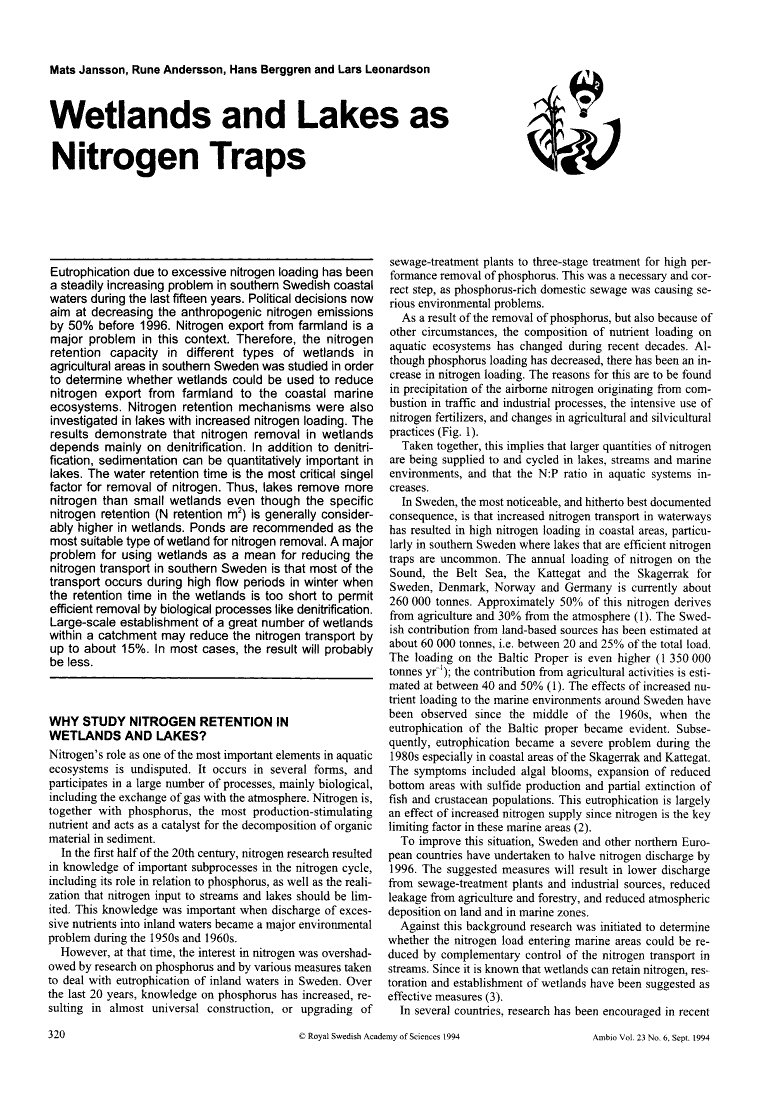
Eutrophication due to excessive nitrogen loading has been a steadily increasing problem in southern Swedish coastal waters during the last fifteen years. Political decisions now aim at decreasing the anthropogenic nitrogen emissions by 50% before 1996. Nitrogen export from farmland is a major problem in this context. Therefore, the nitrogen retention capacity in different types of wetlands in agricultural areas in southern Sweden was studied in order to determine whether wetlands could be used to reduce nitrogen export from farmland to the coastal marine ecosystems. Nitrogen retention mechanisms were also investigated in lakes with increased nitrogen loading. The results demonstrate that nitrogen removal in wetlands depends mainly on denitrification. In addition to denitrification, sedimentation can be quantitatively important in lakes. The water retention time is the most critical singel factor for removal of nitrogen. Thus, lakes remove more nitrogen than small wetlands even though the specific nitrogen retention (N retention m2) is generally considerably higher in wetlands. Ponds are recommended as the most suitable type of wetland for nitrogen removal. A major problem for using wetlands as a mean for reducing the nitrogen transport in southern Sweden is that most of the transport occurs during high flow periods in winter when the retention time in the wetlands is too short to permit efficient removal by biological processes like denitrification. Large-scale establishment of a great number of wetlands within a catchment may reduce the nitrogen transport by up to about 15%. In most cases, the result will probably be less.